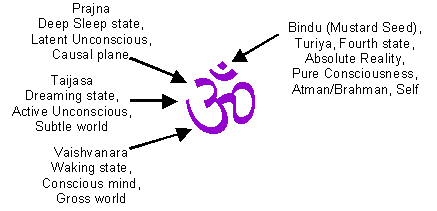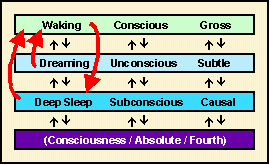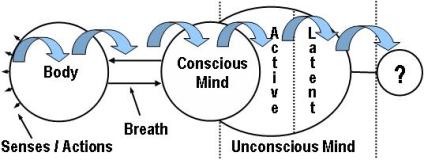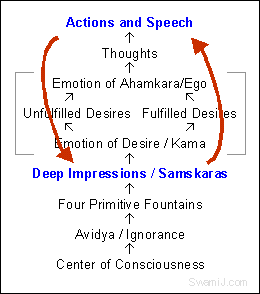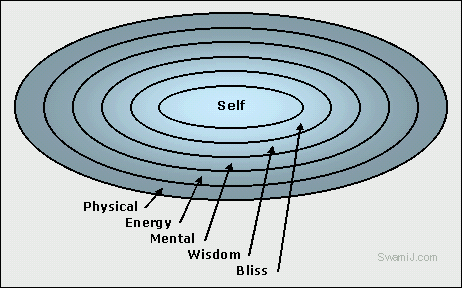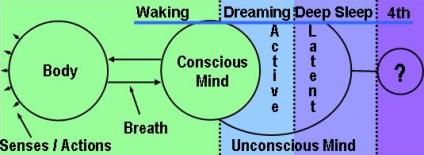|
|
|
||
|
Where to start? The "Featured Articles" linked in the Sitemap are a good place to start. |
The subject of Yoga is vast, having both tremendous depth and breadth, while also having an inherent simplicity. For one who yearns for the highest direct experience of the spiritual mountain, it seems inescapable that there is a need to understand not only the most basic or entry level instructions, but also the nature of the whole journey, as well as the subtler, finer, deeper nuances of the practices along the way. To serve those people with that degree of longing is the purpose of this website, and that is why the distinct, yet synchronous approaches are used.
Three types of articles:
In general, there are three types of articles on the website. The three approaches work together throughout the site (scroll down for more info).
-
Linear or Sequential
- Matrix or Random
- Supporting Topics
Pictures and graphics:
In addition to these three approaches for the articles, you'll also note that there are quite a few pictures or graphics throughout the site. Some of these are used in several different pages, as the point being made by a particular graphic may relate to different topic articles.
I hope you enjoy your visit to SwamiJ.com, and that you find it useful to your inner journey of Realization.
Swami Jnaneshvara
1. Linear or Sequential Learning
One style of teaching and learning presents information or instructions to you in a systematic, step-by-step approach. It is very logical and easy for the mind to follow (which does not mean that the material itself is easy). Much of our learning in traditional schools presents educational material in such a linear way, studying course after course.

On the website, you'll find many articles that present the systematic process of meditation in such a sequential way. From beginning meditation to the highest pinnacle of direct experience, the articles walk you through the process. There are many different articles that incorporate this same approach.
So, why so many articles that say the same thing? It is extremely useful to have different perspectives. There are different ways of saying something similar, wherein each description adds new insight about the underlying process.
Following are a few examples of this approach from the website. There are others on the site, but these few will give you the idea. You might want to go to each page for a moment to get the idea, then use the Back button on your browser so you can look at the others.
Examples of Linear or Sequential Learning Pages:
- Beginning, Intermediate, and Advanced Meditation
- Yoga Meditation Described in 16 Parts
- Five Sheaths or Koshas
- Sankhya Philosophy
2. Matrix or Random Learning
Another style of teaching and learning presents a very broad and deep overview so that the whole of the subject can be seen in one glance. This approach allows you to enter into the material wherever you want, and then take a journey, much as you might if wandering through a vast forest.

The website attempts to take full advantage of the ability to move around material through extensive hyperlinks. Unlike a book that has sequential, numbered chapters and pages, a website can allow you to easily move wherever you want, following your own intuition about what's next.
Notice that the Homepage of the website is designed in this way. While it can be intimidating at first glance, it allows you to be able to jump in anywhere. It is what I like to call "playing" in the teachings.
Following are a few examples of this approach from the website. You might want to go to each page for a moment to get the idea, then use the Back button on your browser so you can look at the others. Notice the many hyperlinks that you can intuitively follow.
Examples of Matrix or Random Learning Pages:
3. Supporting Topics
While some articles are sequential, outlining the systematic process of the inner journey, and others provide the vast overview with lots of hyperlinks, some individual topics require lengthy articles to describe that one process.
It is said that a picture is worth a thousand words. However, many of the subjects of Yoga cannot be captured with a picture. Thus, we are stuck with needing thousands of words. A single article may have one single principle or point that it is trying to make. Once you understand that, the thousand words are not so important. In other words, the thousand words may be just a means to get a single "aha" or insight.
Referring to these articles as "support" topics means that they help to clarify or expand upon the sequential articles. By understanding the supporting topics individually, the systematic process itself can be more easily understood. For example, breath training is a stage of the systematic process, and the lengthy descriptions of breath are the support.
Following are a few examples of supporting topics from the website. While there are many on the site, these few will give you the idea. It would be useful to click on a link below, make a quick scan of that page, use the Back button on your browser, and then look at the other links as well.
Examples of Supporting Topic Learning Pages:
Naturally Blending All Three Approaches
If you've clicked through the links above, you have probably already noticed how each approach stands alone, and yet, integrates with the others. If you'll keep these three approaches in mind when going through the website, you'll have an increasing understanding of the simplicity of the site, even though it may have looked complicated in the beginning.
In many articles, you'll notice a blending of the three approaches. An article on a specific topic may also have many hyperlinks to other pages. This allows you to move around the site, as said above, like wandering through a forest. That same topical article may also touch on the systematic process of the inner journey, putting that specific topic in context.
-
Linear or Sequential
- Matrix or Random
- Supporting Topics
While it is true that the most important part of life is enlightenment (or whatever you want to call it), the journey of life should be pleasant. That is also true with our studies and practices of meditation, contemplation, prayer, and mantra. Therefore, please, I invite you to engage this website in the spirit of "play." Have fun. Enjoy life. Enjoy your journeys through this website. Yet, "remember" at the same time, while you play.
Integrating Pictures and Graphics
Following are a few examples of pictures or graphics that are used in the site. Notice how each of them contains a blending of describing the sequence of the inner journey, as well as containing a topic unto itself.
-------
-------
This site is devoted to presenting the ancient Self-Realization path of the Tradition of the Himalayan masters in simple, understandable and beneficial ways, while not compromising quality or depth. The goal of our sadhana or practices is the highest Joy that comes from the Realization in direct experience of the center of consciousness, the Self, the Atman or Purusha, which is one and the same with the Absolute Reality. This Self-Realization comes through Yoga meditation of the Yoga Sutras, the contemplative insight of Advaita Vedanta, and the intense devotion of Samaya Sri Vidya Tantra, the three of which complement one another like fingers on a hand. We employ the classical approaches of Raja, Jnana, Karma, and Bhakti Yoga, as well as Hatha, Kriya, Kundalini, Laya, Mantra, Nada, Siddha, and Tantra Yoga. Meditation, contemplation, mantra and prayer finally converge into a unified force directed towards the final stage, piercing the pearl of wisdom called bindu, leading to the Absolute.
